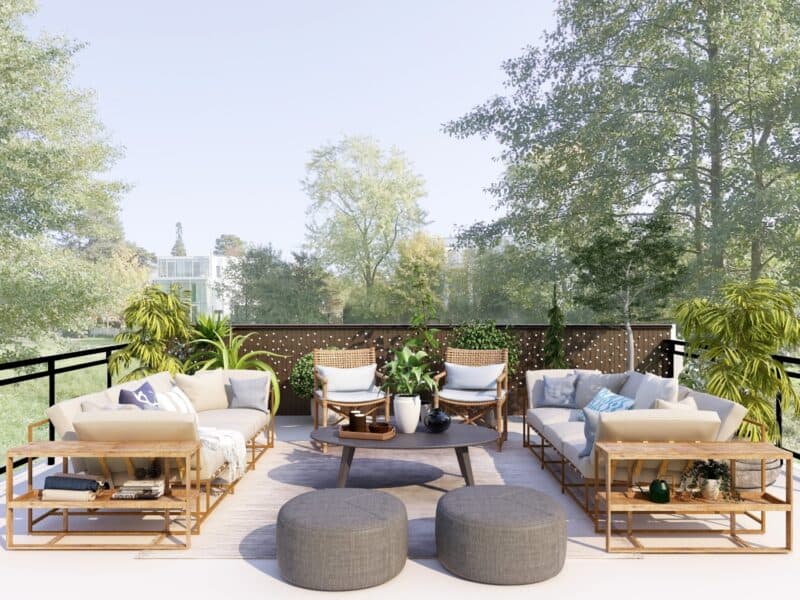As long as you’ve got a reasonable amount of space then a patio or terrace can spruce up a garden area and turn it into a valuable asset for a very reasonable sum of money.

If the garden is on a hill, then terraces can make it more usable by giving you more flat areas that can be used for lawns, flowerbeds or areas for children to play.
Patios
A patio is an area of hard-standing just outside the back of the house, usually paved, where you can put things like a barbecue and garden furniture without the hassle of everything sinking into the lawn, damaging both the lawn and the furniture!
Quite often it will also be a place to hang washing as you can go outside and come back in without getting mud all over your shoes. To make it long lasting you need to put down a good layer of hardcore and concrete before laying paving stones or bricks.
Taking care to make sure that these supporting layers are flat will make levelling the paving all the easier.
Note that in fact you should aim to have the surface slightly off level, sloping gently away from the house to give water somewhere to go. If you don’t have a large spirit level for this job you can make one by securing a smaller spirit level to a long batten.
Dwarf Walls
Patios often have low walls surrounding them, purely as a decorative feature, and as there’s no structural element to them, it’s a good place for the novice to try out brick laying.
Make sure you leave some gaps or drainage channels for water, and consider putting in some lighting to extend the summer evenings into dusk.
Terraces
Strictly speaking, a terrace is a flat area that has been made on the side of a hill by building the hill up or digging part of it away, sometimes a combination of both.
Doing both is often the easiest option as the material that you have to dig out at one point can be used to build up the other side. This lessens the chore of carting the rubble and topsoil away and disposing of it.
In contrast to a patio, a terrace doesn’t necessarily need a hard covering like stone or brick, it could be laid to lawn.
But it will almost certainly need a retaining wall, and here’s where you’ll need the advice of a reputable garden landscaper at worst, and a structural engineer at best, if the hill is very steep.
Each level will need a wall to stop it migrating downhill to join it’s neighbour.
Decking Takes Off
For the durable layer, whether for a patio or a terrace, the recent rise in popularity of decking has been phenomenal. This is largely because it’s cheaper and quicker to lay than a conventional hard surface.
Despite the fact that there’s a bit of a decking backlash in the home and garden media, for a development project, decking is almost certainly the best route.
Go for Outstanding Results
If you are renovating to make a profit, then consider what you’re doing carefully and what the return on your investment will be.
Look at other gardens in the area and assess what you need to do to make yours stand out in the selling contest.
If the garden would otherwise be just a lawn with some tired borders, or a sea of mud (if you’ve had a lot of building work done) then some hard landscaping could be just the thing to make your project stand out.


